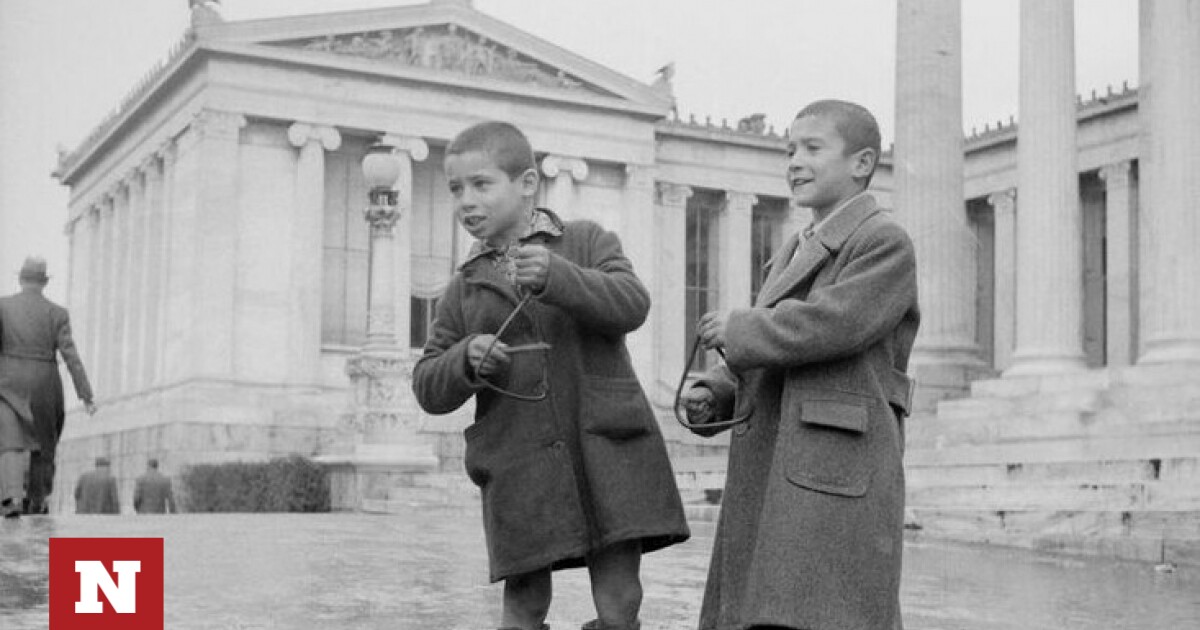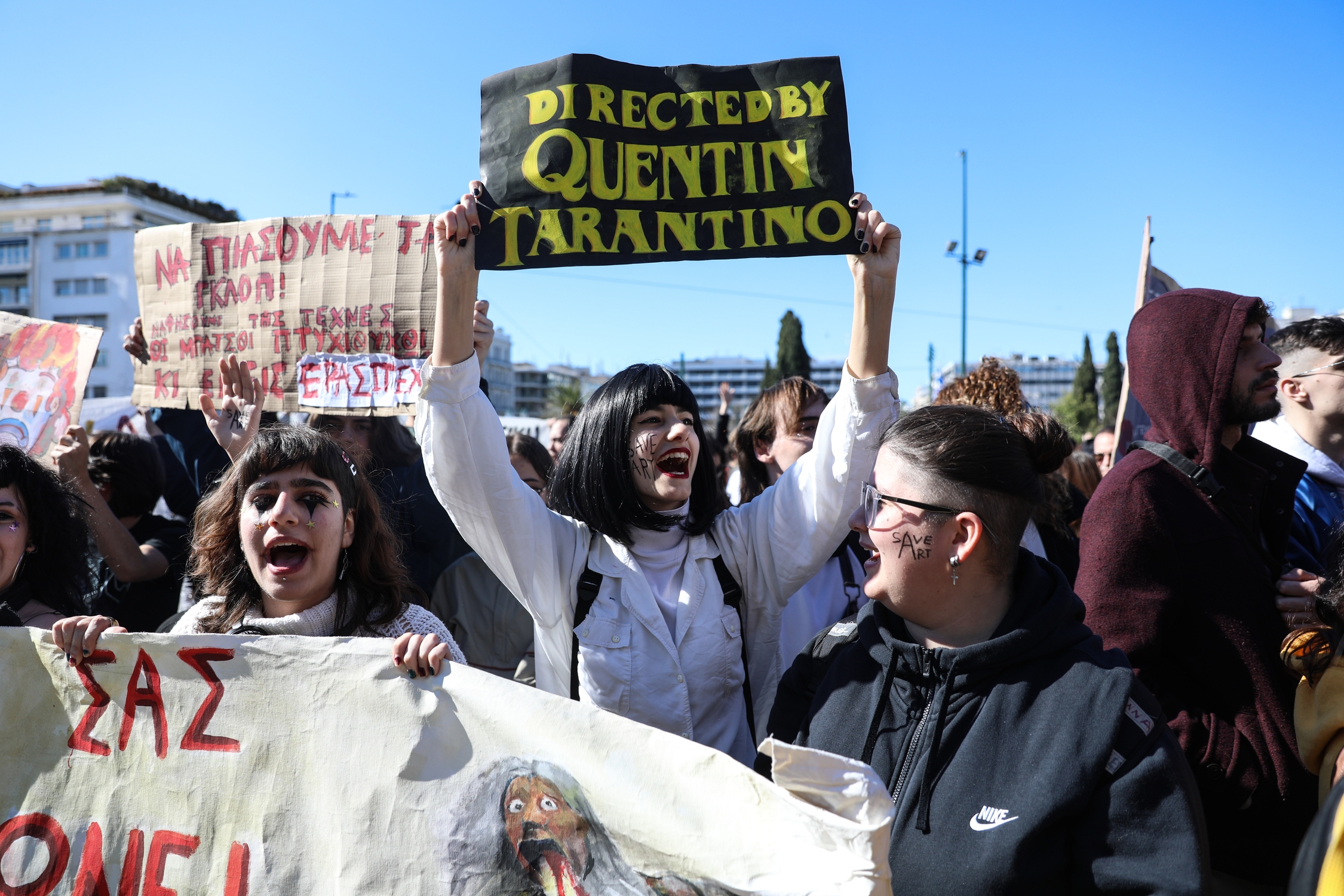Christmas and New Year in old Athens: Unforgettable moments of yesterday – Newsbomb
Christmas is a memory. Memories usually of childhood. Memories of simplicity, carefree, light in the soul.
As Kostis Palamas wrote on a Christmas day in 1924: “Clear skies shine inside me, and my body, a humble manger, I see and it changes, it becomes a temple. Oh! A God is born in me “.
When we were children we waited for Christmas and Santa Claus with impatience and joy. It was the celebration we had combined with snow, warmth, family, gifts.
Christmas days were happy, carefree with love.
Over the years some things have changed. Especially in our time, which for two years now is experiencing an unprecedented daily life. Our pandemic has to change our lives, our habits.
The coronavirus puts a brake on our dreams, our escapes, our meetings. The pandemic makes us reminisce about yesterday.
The Christmas decorations in the shop windows and in the streets make us miss the Christmas of previous decades. Some were lucky and lived an unforgettable Christmas. When everything was simple and true.
We unfold yesterday through photos and videos from previous decades, hoping that the nightmare we live in will end soon.
Let us keep the people we love with us and spend these holy days of Christmas with them.
Memories of another Athens
In the 60’s at Christmas, the center of Athens was the reference point for young and old.
The streets were lit up with lanterns, the shop windows “dressed up” for Christmas competed with each other, and the children were happy with the gifts they were looking forward to finding either under their pillow or under the Christmas tree.

Then Christmas Athens awakened in people the poetry of kindness and love. Christmas made the city remove its faceless mask for a while.
Around Omonia Square, in Chafteia, around Syntagma, they were circulating others with shopping bags, others with Christmas presents in boxes that in the eyes of the bombers looked magical.
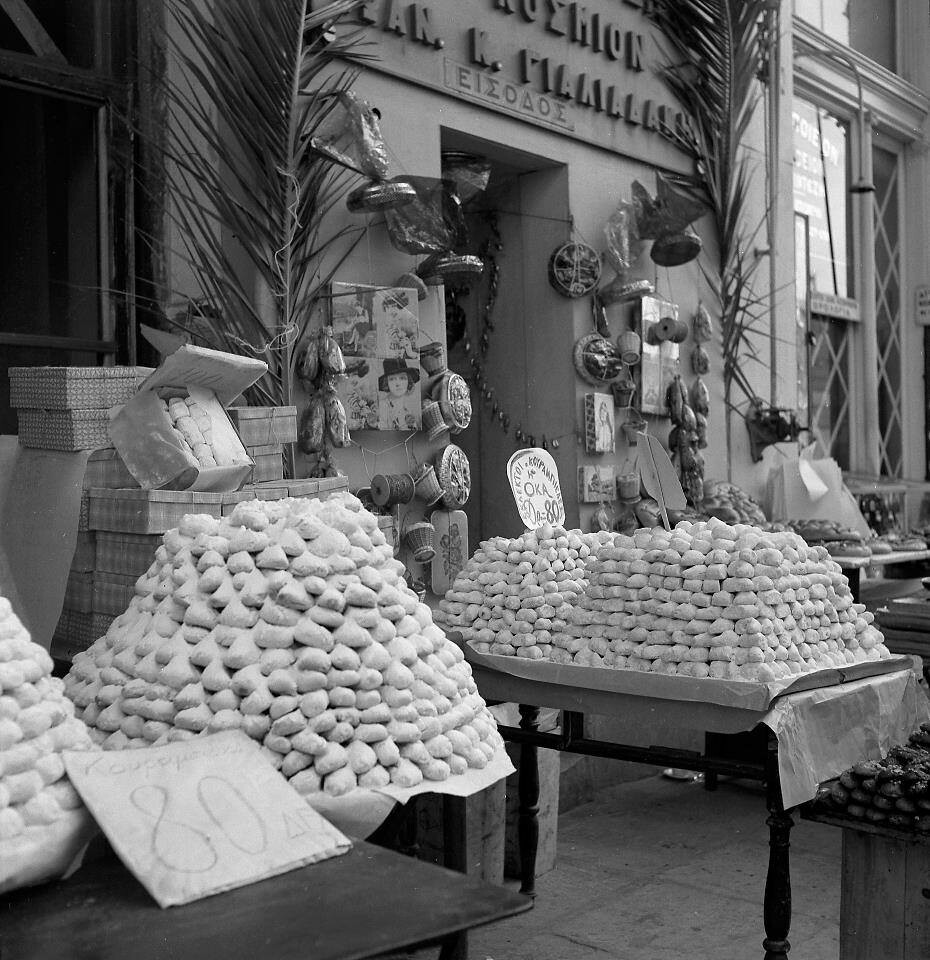
In those days the hand of the rich who went down to shopping in Athena always went in their pocket when someone poor happened to be on their way. When Christmas was for the faithful.
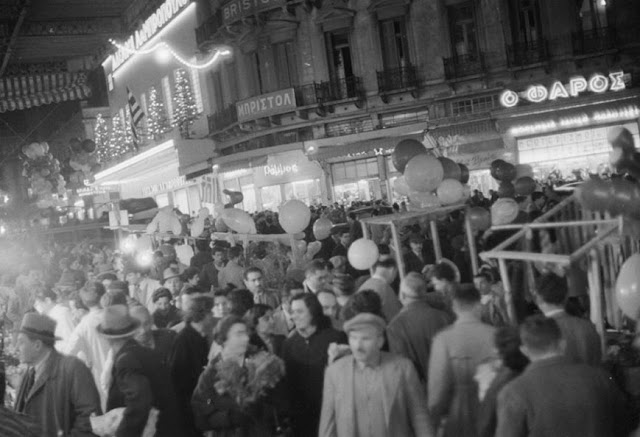
The “passionate” had not yet appeared to give a strong shade of money to the feast of Christ. In the celebration of simplicity. At Christmas in the city there are baskets of wanderers from Aeolus to Athena and from Monastiraki to Chafteia. They are signs of young people on the streets and cars filling the streets of the Stadium.
The lottery winners worked day and night chanting their wares, the New Year’s State Lottery outside the legendary shop of Bakakos in Agios Konstantinos.
In the festive capital that is struggling to heal the wounds of the Greek-Turkish war, the “pocket cinema” is inaugurated in the store of Maggioros and Roussopoulos on Ermou Street.
“Edison’s Wonderful Movie – 60 Minutes!” that the ad is just small booklets with photos that capture the different phases of a movement with a quick browse. And yet they are enough to gather a crowd of people who want to enjoy the spectacle as “something extraordinary” for the holidays of 1897.
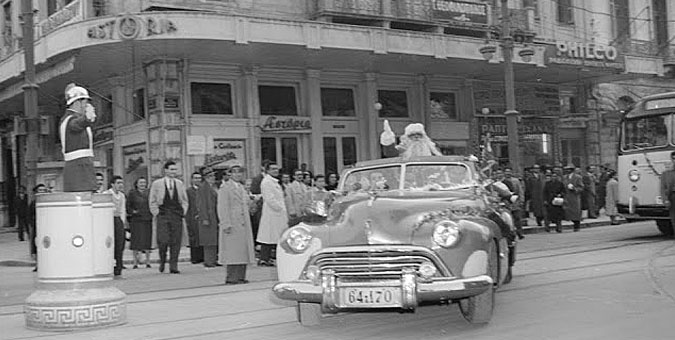
The orthodox Santa Claus is none other than the Great Kingdom of Caesarea, which has nothing to do with the western Santa Claus (Saint Nicholas).
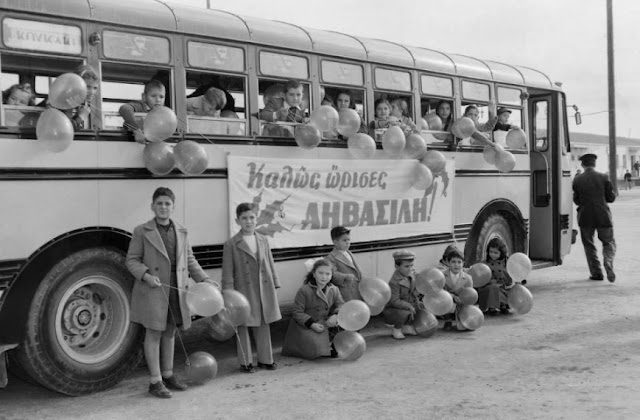
In urban Greece it is considered to have become famous in the 50’s-60’s, when the Greek immigrants from America also sent their relatives Christmas cards with the figure of the red-clad Santa Claus.
The custom of gifts to men in traffic
On the New Year of the distant 1936 ordinary citizens give for the first time to traffic wardens throughout Greece.
The population of the cities (after the power outage) has started to resort but also the streets are filled with cars and inexperienced drivers who have confucius.
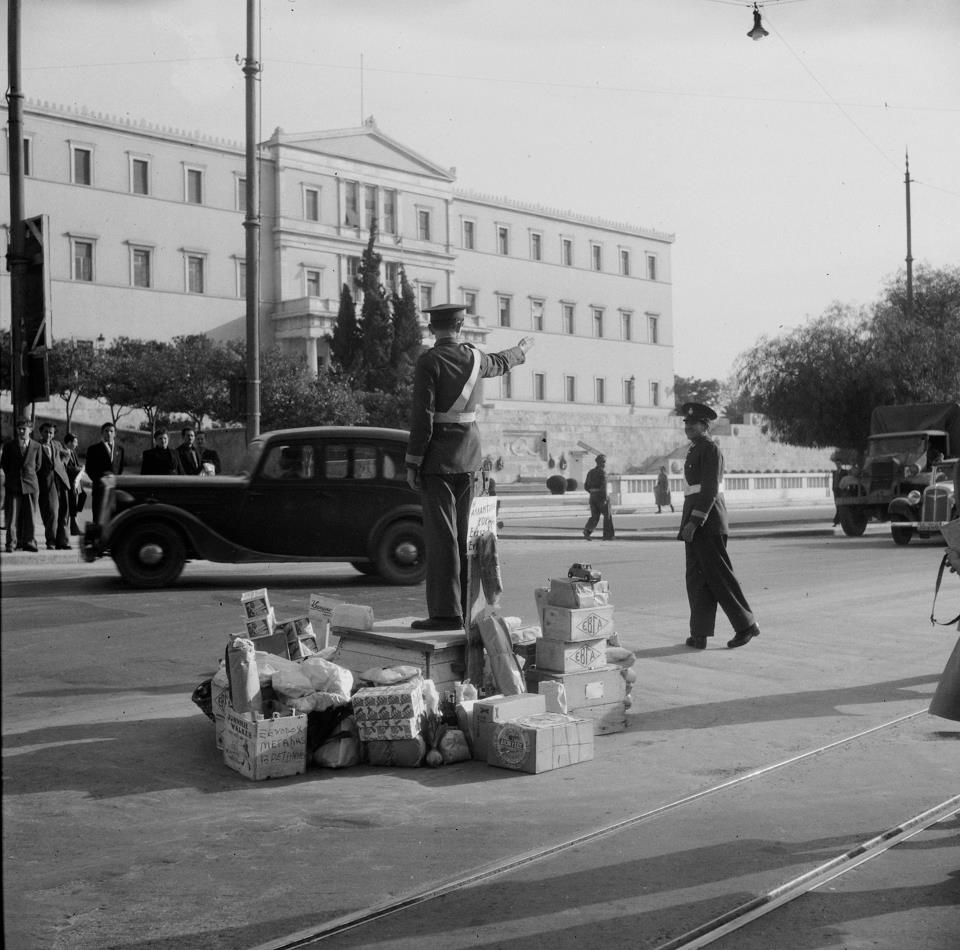
Citizens sympathetically observe the work of traffic wardens while shopkeepers take a short time to praise. The authorities reject it as they consider it a bribe. The incident reaches the king’s ears and he goes out with his driver on Rigillis Street and leaves sweets and wine as a gift on the wheel of the area.
One of the most famous sweets they make the housewives during the holidays are the kourabiedes. In the past, the traditional cake with icing cost the housewives 80 drachmas per oka.
older, in the first decades of the 20th century, the traditional sweets that were not missing from the festive house of the Greeks, the royal pies (literally three and sixty), fudge, petit fours, caramel, brandy, liqueur and pastes at their prices. factories “, which made the Arsakeio gallery to musk.
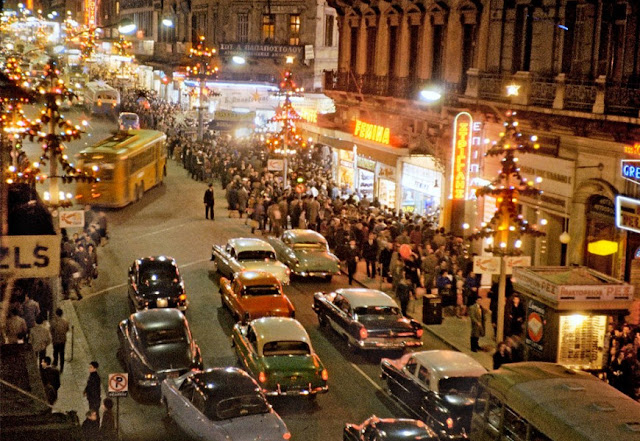
In the 70’s where the flourishing of Greek cinema is the news of the time. The stars become the cover of magazines and enter festive balls to catch the eye.

The “authors lottery”
From 1936 to 1968, the favorite habit of the Greeks is to buy the “lottery of authors”, to have “the right to dream”. The lucky draws distribute great gifts for the season, such as “2 apartment buildings, 2 electric houses, 90 apartments, 60 cars, millions in cash”, up to… “transfers of Piraeus Patraiki and Titan cements”.
The editorial lottery was abolished during the junta, a fact that created great tension in 1968 in the journalistic profession.
The children of all Athens have a hidden way every Christmas. To do raid on Minion. The legendary department store of Patission, which started from the small “Kiosk Minion” of Giannis Georgakas in 1934, evolves into the behemoth of the second half of the 20th century in Athens.
The 6th floor opens for the public only during the holiday season, and there the sweets, the Santa Clauses, the TV screens – a pioneer for the season and the offers are in themselves a reason to travel to the city.
There are few Athenians who were not photographed with the smiling Santa Claus of Minion, and even fewer who never stepped on its escalators in the 1970s and 1980s. Then on the sixth floor came the Disney heroes and Miss Piggy – who had been with Kermit for a year – caused a wave of panic, because she was very tall and big for the five-year-olds who faced her, bigger than life itself. It was the time when the little ones came out crying from the dressing room of George Konstantinos, who had made appearances for the children during the holidays, because “He did not want to give us an autograph”, in contrast with Thanasis Vengos who, another year, also distributed candies and autographs.
During these decades, the children of the employees of Olympiaki were crowded, on the platform of Goodbye at the airport of Elliniko, to see up close Santa Claus who was prototype coming by helicopter and handing out blonde Bibibo and other El Greco toys. Not everything was so loving of course. Sometimes on festive days, no “fine” fell, as in 1985 in Disco Barbarella, when the queues reached Syggrou and the people pushed, they broke down the door.

The custom of the Christmas tree
The custom of the Christmas tree entered Greece during the Bavarian occupation, when at Christmas 1834 the house of Otto in Nafplio was decorated with a tree and continued in the following years in the palace of Athens. On December 24, 1843, a Christmas tree was erected for the first time in a Greek house, specifically in the mansion of Naxiotis Ioannis Paparrigopoulos, Consul General of Russia in Athens.
The custom, unlike the rest of Europe, was slow to spread in our country. It was not until the 1930s that some bourgeois houses began to decorate the Christmas tree, and after the war the custom spread rapidly in both the cities and the countryside.
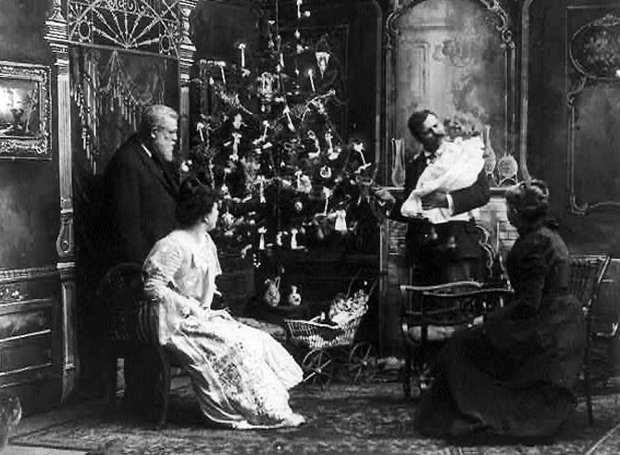
An attempt to replace the Christmas tree with the most Greek-style boat in the mid-1970s was unsuccessful.
SOURCES: Time Machine, Pandora’s Box, Avalon, Like today
Photo: Costas Balafas / Benaki Museum

